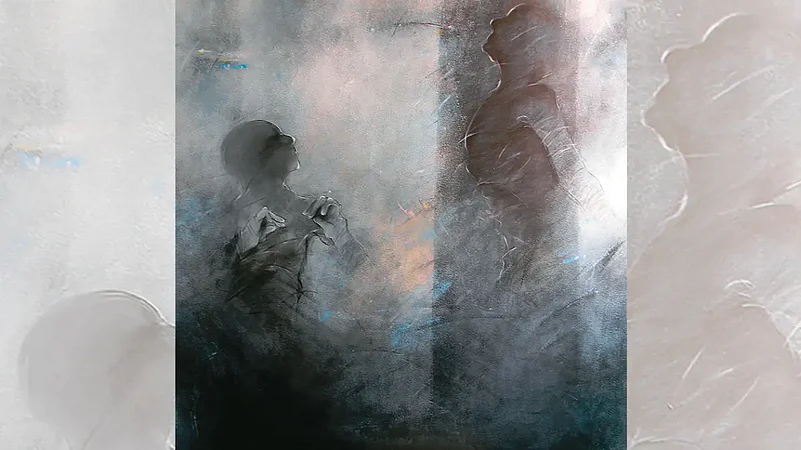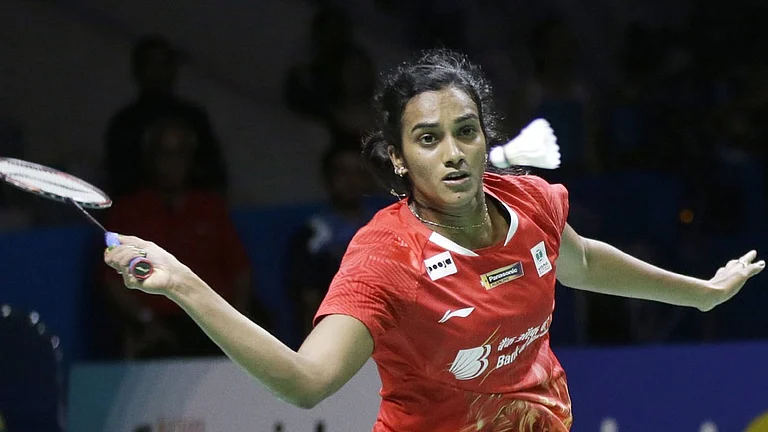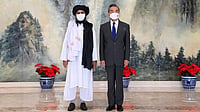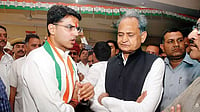In Mohsin Hamid’s fifth novel, The Last White Man, the protagonist wakes up realising he is no longer white. Anders’ skin turns dark, and every ‘white’ inhabitant of the unnamed town is subjected to this unusual plague. In the novel, Hamid expounds on the consequences of this change—the sudden loss of identity—on the citizens of the town. In a conversation with Peerzada Muzamil, Hamid talks about his literature, how 9/11 changed his perspective, and how identity can fall prey to a narrative and change, most often in the worst of ways. Excerpts:
In a fragmented world like ours, perpetually ridden with violence, conflicts, polarisation and persecution, what hope does a fiction novel like yours offer?
There is certainly a human instinct to be fearful of people that we think of as different from ourselves. We perceive these people as a threat, which is natural because we are biologically wired to favour information about threats. It is very easy for people to align themselves with various identities, tribes or groupings opposed to other groups. However, throughout history, we have also seen a different aspect of human civilisation, wherein somehow large and very diverse groups have managed to live and build a society together. That happens because they invent narratives that allow them to disarm this threat impulse and allow them to not see each other for who they are.
I think we are living in a culture where we are in a duel between narratives that cause us to see others as threats, which results—as we’ve seen throughout history—in the events like the 1947 Partition and the ensuing bloodbath, or what’s happening in Ukraine right now, or what we saw in Bosnia, or what we see in India today, with the rise of Hindutva and the relationship of India with its Muslims. Once the narrative—that this other group is a threat— festers, and once that narrative becomes dominant, then the impulse for coexistence very quickly gives way to an impulse towards strife and violence.
It is up to us to either give in to the impulse and invent narratives that say we are a threat to each other, or try to imagine narratives that envision a different way of relating to each other, of disarming this threat impulse. One of the things I think novels can do, and which my novels try to do, is exactly that—try to disarm or destabilise these narratives that cast us as a threat to each other, and to see if a different kind of narrative can be found.
In your novels, we see the depiction of forced displacement, cataclysm on the streets, identities that are perceived as threats and people in a constant struggle to flee persecution. How did you find your voice as a novelist to deal with these themes? You have seen America, before and post-9/11. Did your observations play any role?
I have spent my entire life trying to navigate these things. I went to California when I was three, in 1974. I didn’t speak a word of English, and I had to adjust to this new reality. I went back to Lahore in 1980, and I had forgotten my Urdu and I had to adjust to a completely different reality. Then I came to America for college. Hence, even before 9/11, I had been grappling with how societies create a feeling of ‘belonging’ or ‘not belonging’, and the danger of belonging to the category of those who do not belong.

Still, in the US, I had had these benefits from living in cosmopolitan cities, attending elite universities and having a well-paying job; I participated in something like ‘partial whiteness’, being allowed to just pass through and do my thing. However, after 9/11, the mild discrimination I had earlier experienced from time to time in the US, gave way to a more overt idea that people like me were people of suspicion and threat. Suddenly, my category had shifted. I was no longer invited or allowed to have that so much. That was upsetting, and I wanted things to go back to how they were before 9/11.
I deeply felt I had lost something—the partial whiteness. That led me into writing this book. Certainly, 9/11 informed the experience of waking up one day as a person belonging to a category that, by and large, is perceived as a threat.
When the protagonist Anders loses his father, you depict his grief very intimately. Russians were very good at doing this, especially Chekhov. How do you engage as a novelist with something as innate as the sense of loss?
The emotional heart of this book is really the story of loss, and at the centre of that is the relationship between Anders and his father, who is approaching the end of his life. People in the town are losing their identity and the colour of their skin, but Anders is losing something more—his father. It is possible to acknowledge, dignify and honour peoples’ feeling of a sense of loss, even if what they are losing is not something you agree with. For instance, Una’s mother is losing the privilege of being a dominant racial group, something we don’t necessarily agree with, but she is losing it, along with her son and husband, and it is possible to empathise with everything that she is losing.
Many people around the world are experiencing a sense of loss. As the pace of change accelerates, we become unmoved, unsettled, sense that things are being taken away from us, and that evokes a wish of going back to how things were.
Anders, like Samsa in Metamorphosis, wakes up seeing himself transformed, but into a dark man. All the white inhabitants in the city are losing their whiteness and becoming dark. You tell a story about polarisation—which is a reality in today’s world—through magical realism. Is distorting reality important?
There are three parts to answer. Firstly, what we call reality isn’t actually real. The colours we see every day do not exist in reality. These colours are the way our brains represent the information about the frequency or wavelength of light reflecting off an object. I think that consensus reality is fiction to a certain degree.

Secondly, it is a very fertile zone to play with, and slightly disrupts this consensus reality. In Moth Smoke, it was done by creating this surreal trial where all the characters tell you their stories, and you sort of sit in judgment over these characters. The rest of the novel adheres to consensus reality concepts, but the trial is slightly skewed. In The Reluctant Fundamentalist, a novel told in the form of a dramatic monologue, the reader takes the position of the silent American stranger who is never heard from.
This disruption of consensus reality has always existed in my fiction. Now, the question is, what is magical realism? When I hear of ‘magic’, I start thinking of my grandmother’s spirits returning to haunt the house or intervention from a genie in the events of nature. My fiction is in conversation with the effects of technology, particularly recent books. In Exit West, it is that. You can video call someone who is halfway across the world. Yet, it is as though we can see and hear each other, there are these windows and our computers. Technology collapses the distance, which has a profound impact on what life feels like. Exit West, in a sense, takes that technological collapsing of distance to an extreme place. And The Last White Man tries to react to how technology encourages us to sort each other—to like or unlike things; to follow or unfollow. The algorithms that run social media are constantly trying to sort us into ever bit more extreme positions of opposition, into binaries, into zeroes and ones. And the novel, in a sense, reacts to that.
I think in a way my literary antecedents—being modernist writers like Kafka, Calvino, Camus, Borges and Virginia Woolf—were also playing with form. Hence the other strand of my fiction is this Modernist one. I have also been interested in Sufi literary tradition that goes back centuries and explores the idea of transcendence and love as a response to the temporariness of mortality.
Thirdly, another aspect of my novels lies in the politically conscious and motivated fiction of writers like Baldwin, Toni Morrison, Chinua Achebe and Manto—writers who intricately deal with the situation around us and talk about the sudden rise of conflict among groups. Magical realism is not necessarily a tradition I would situate myself within, even though I don’t reject it. But the strongest kinship I feel is with the Modernists and the Sufis.
In your novel, the sentences are very long; the style somewhat Proustian. Are there any writers whose style—or some elements of it— you have tried to imbibe?
These long sentences establish the kind of rhythm and music that carries you through. The lack of full stops means that it is hard to pause in the middle of a sentence or an idea, so the reader doesn’t stop and say: “I wonder if I disagree with this” or “I wonder what I think about this”. The reader glides along. This is somewhat like an auditorial rhythm that so many writers and poets have employed. Many of the novelists and writers I respect achieve these sorts of effects. But I just wanted to set up these rhythms and senses in which perspectives change, and in which ideas are raised and then qualify, where you are moving forward, endlessly without any full stop to interrupt you.
The style attempts a way of creating at a micro level, what the novel is trying to do at a macro level—allowing a change of perspective in the characters, and in the readers.
(This appeared in the print edition as "Disarming the Threat Impulse")


























